As one of the first to step onto the ice, I felt like a lunar explorer who didn't know what the surface would feel like under my feet!And, I knew that with every step I was standing where no human had ever stood before.
On Friday the Oden was tied to an ice floe and for the first time, teams were able to stand on the ice and collect samples as we floated on the ocean that was almost 2 miles deep beneath us. And, then we were visited by seals and penguins and whales, oh my!
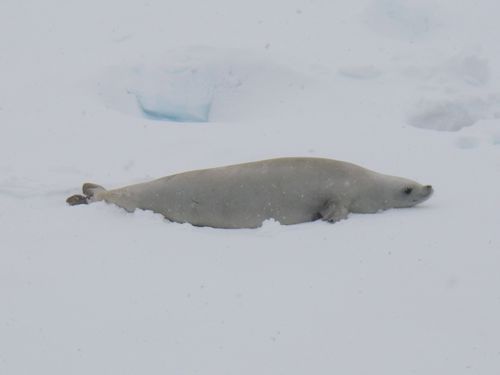
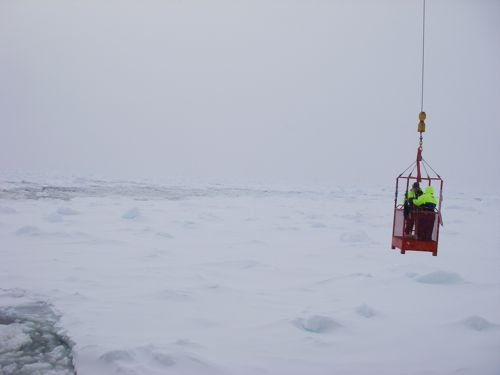
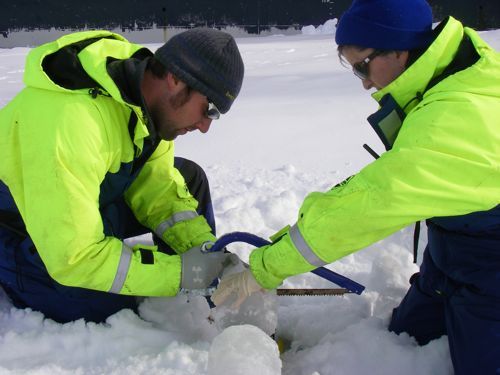
Student Experiment is a Huge Success!
Congratulations to Eric and Jon!
Yesterday offered me the first chance to test the underwater video camera system that was designed and created by two ninth grade students at Liverpool High School. Check out my Oct 8th journal for a complete description and a short video in which Eric and Jon explain how they solved a problem that the ice researchers posed to me. The underwater video camera is attached to a pole that allows me to push it through a hole in the ice and then control the angle of the camera's view. The underwater camera then feeds an image through a cable to a hand held camcorder above the ice. The US Ice Research Team leader, Dr. Tish Yager, was very pleased with the quality of the images and how well they showed us what we could never have seen before. The bottom of the ice is very irregular. Even more important, it showed how the communities of ice algae and bacteria are distributed in the ice. These biological communities appear brown in the ice and they are a primary source of food for the local food web. This is also the living stuff in the ice that the team has come so far to study. The photo below was taken from the video and it is important to note that I did not use the camera's light system. This it the natural colors of the ice and water based on sunlight coming through the snow and ice.
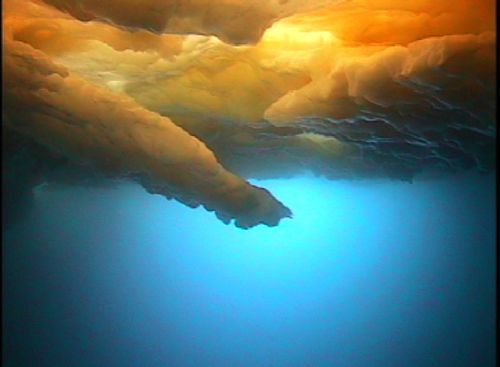
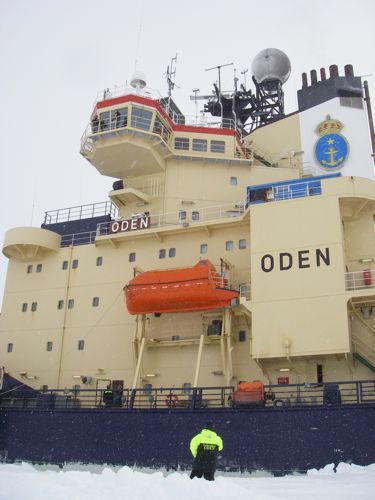
Flags of the Day
The following members of "Team Oden" created the flags below:
The ARCUS Staff, Fairbanks, Alaska Camp Talooli, Lake Temalo Pirates, Pennellville, NY Athens Montessori Orange Class, Athens, Georgia Athens Montessori Middle School, Athens, Georgia The Expedition Earth Science program, Liverpool 9th Gr, Liverpool, NY Alex and Zach, Athens, Georgia Cottage Lane Elementary School, Blauvelt, NY Camp Talooli, Lake Temalo Pirates, Pennellville, NY
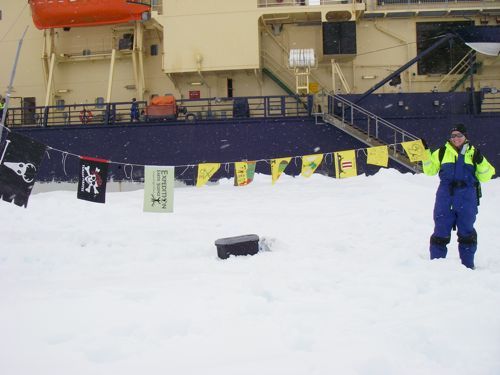
Photo of the Day!
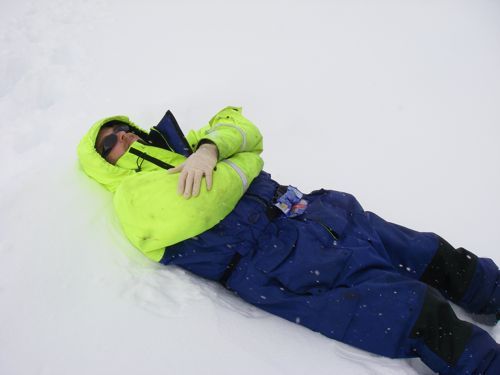
A Reminder,
Be sure to go to the Live From IPY section and register to participate in our first live webinar from the Oden that will take place this coming Monday!
A Gift,
As a teacher and camp program director who has participated in many Live from IPY web conferences, I have created a document for teachers and others who are planning to participate with their classes on Monday. It is a series of tips and suggestions for how to prepare yourself, your students and your equipment. The document is attached to the bottom of this journal post.
A Warning,
If you enjoyed my Crazy Teacher Video last week. Watch for short videos starting tomorrow of penguins, ice-drilling scientists and a video shot underwater, beneath the sea ice!
An Apology,
Again, I am still couple of days behind in responding to your questions in the Ask The Team forum. I will work hard today to get to all of them.
Take care, have fun & make memories,
Jeff Peneston
| Attachment | Size |
|---|---|
| How_to_Join_the_Live_Webinar.pdf58.21 KB | 58.21 KB |


Comments